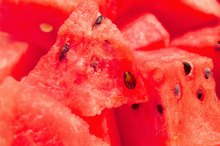3 Ways to Understand the Difference Between Gluten and Yeast
Gluten Intolerance
Gluten, which is the substance used to bind dough in many baked foods, may cause severe reactions in some people. Once diagnosed, a gluten-free diet is required to prevent damage to the intestines. Wheat, barley and rye contain gluten, as do many additives made from these products and included in many common foods, including some cheese. More series ailments, like celiac disease, can be diagnosed with a biopsy or blood test. You must understand that negative results from these tests do not mean you don't have gluten intolerance.
- Gluten, which is the substance used to bind dough in many baked foods, may cause severe reactions in some people.
- More series ailments, like celiac disease, can be diagnosed with a biopsy or blood test.
Yeast Allergy and Infections
While the symptoms of a yeast allergy or infection often mimic those of gluten intolerance or celiac disease, a different substance sets off these reactions. Yeast is a group of fungi that leavens bread and ferments alcohol. Besides avoiding yeast, you should also avoid all sugars. If you are suffering from adverse symptoms related to sugar consumption, you likely have a yeast infection or allergy. Although, in the case of allergies or chronic Candida infections, a true diagnosis may never occur. Usually, you must simply rule out all other causes to understand what is causing your symptoms.
- While the symptoms of a yeast allergy or infection often mimic those of gluten intolerance or celiac disease, a different substance sets off these reactions.
- If you are suffering from adverse symptoms related to sugar consumption, you likely have a yeast infection or allergy.
Gluten and Yeast-free Diet
Since there is little difference between symptoms, most people choose to adopt a gluten and yeast-free diet instead of focusing on removing just one element. Some physicians believe that gluten intolerance underlies a yeast allergy. Since you are already avoiding bread and other baked products from wheat flours, as well as some alcohol on a gluten-free diet, it is not hard to also avoid yeast. To understand the difference between gluten and yeast intolerance, you must pay close attention to your symptoms and what causes them. After trying a gluten and yeast free diet for several months, add gluten back into your diet. If symptoms appear, then you have may have gluten intolerance.
- Since there is little difference between symptoms, most people choose to adopt a gluten and yeast-free diet instead of focusing on removing just one element.
- To understand the difference between gluten and yeast intolerance, you must pay close attention to your symptoms and what causes them.
Related Articles
References
- Ludvigsson JF, Leffler DA, Bai JC, et al. The Oslo definitions for coeliac disease and related terms. Gut. 2013;62(1):43-52. doi:10.1136/gutjnl-2011-301346
- Gujral N, Freeman HJ, Thomson AB. Celiac disease: prevalence, diagnosis, pathogenesis and treatment. World J Gastroenterol. 2012;18(42):6036-59. doi:10.3748/wjg.v18.i42.6036
- Cianferoni A. Wheat allergy: diagnosis and management. J Asthma Allergy. 2016;9:13-25. doi:10.2147/JAA.S81550
- Ludvigsson J. et al. The Oslo definitions for coeliac disease and related terms. Gut. 2013 Jan;62(1):43-52. doi: 10.1136/gutjnl-2011-301346. Epub 2012 Feb 16.
Writer Bio
This article was written by the CareerTrend team, copy edited and fact checked through a multi-point auditing system, in efforts to ensure our readers only receive the best information. To submit your questions or ideas, or to simply learn more about CareerTrend, contact us [here](http://careertrend.com/about-us).









